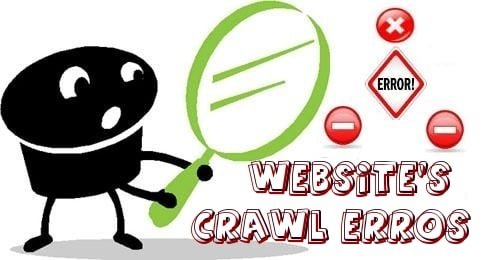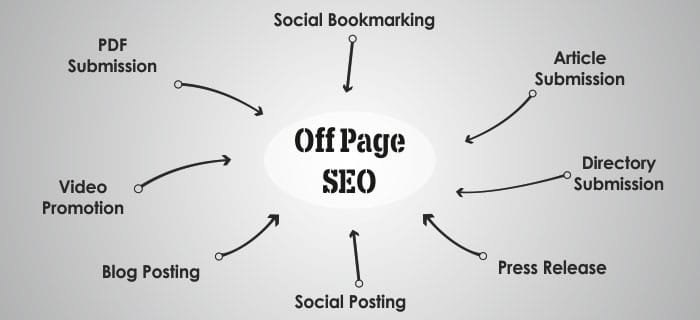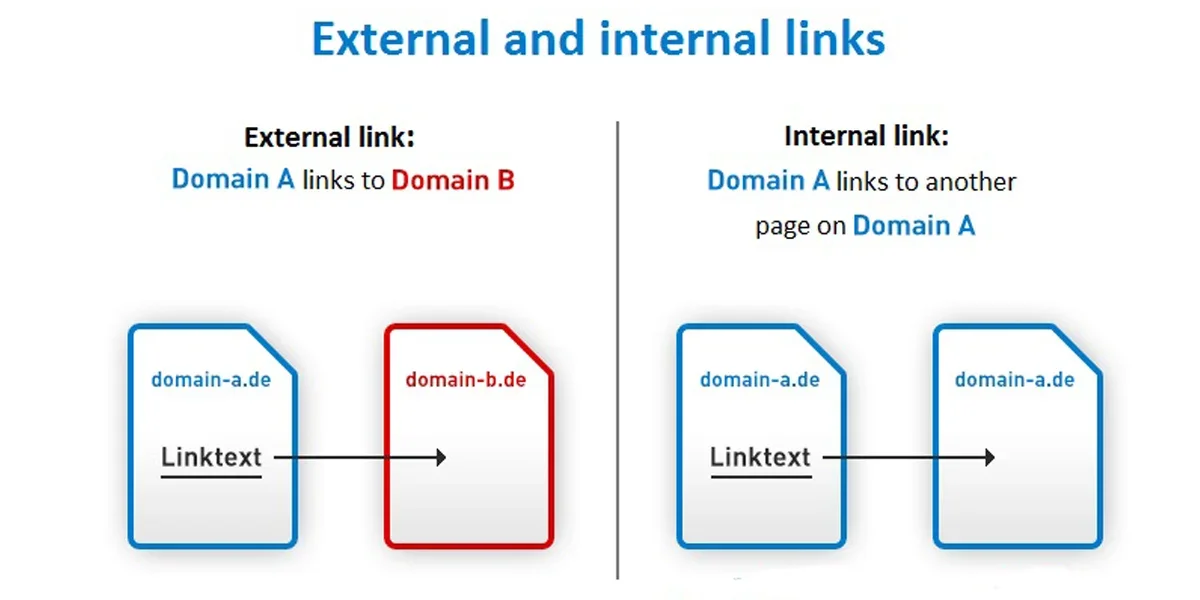Every business focuses on driving high-quality and organic traffic by creating an outreach through promotional tactics. SEO Content Writing plays a very prominent role in making possible the growth of the business. The ranking of your website relies on the title, meta description, targeted keywords, resourceful links, and some SEO tools.
SEO and Content Writing are interconnected because it requires the optimization of the website. As a result, using quality content incorporated with targeted keywords would generate an organic audience. It will lead to a high ranking on your company’s website.
Learn all about SEO content writing and the prominent role of content writing and its types in SEO.
Before jumping on the topic, know about the web content writing under which we have SEO Content Writing.
Table of Contents
ToggleWeb Content Writing

Curating content Writing for any website is referred to as “Web Content Writing.” Following estimates by HubSpot reveals that 82% of marketers have made investments in content marketing. 8% are not sure about using content marketing, and 10% are not using content marketing. You can get SEO content writing services to grow your customer base.
Key Features:
Web content writing is curating informational and accurate content for the high credibility of a company’s website.
1. Keep it simple and sorted:
Keep the sentence formation simple and sorted. The length of each sentence must not exceed more than 20 words. Use simple words to form a sentence that can be precisely and comprehensively understood. Refrain from using complicated words and long sentences, resulting in low readability. Provide your views in short pointers, which eases your work to deliver the message to your audience.
2. Heading and Subheading
Try to wind up your content in an abridged version that your audience can quickly grasp. Give a proper heading or title to your content, so that message of the content can be delivered. Be consistent with your content, but also give suitable sub-headings to sustain the readability of your topic.
3. Use the Focused – Keywords:
To attract heavy traffic and web page ranking, include the focused keywords. They help to drive the targeted audience using general keywords. Incorporate these keywords into your topic and within the content, using maximum times to increase the chances of ranking. You can use the focused keywords in the sub-headings and form a question using the keywords. Perform a search, note down the targeted keywords, and rank the optimized content.
4. Internal and External (Source) Links
Hyperlinking is the best way to link building with internal and external links. They are the only source for associating the content for creating links between the companies. By this, you are allowing others to share your content with credit. Before anyone tries to plagiarize your content for their use, you must have a copyright.
5. Readability
Try to maintain the readability of your content using short sentences, avoid passive voice, add headings and subheadings, and clear-cut summarization. Your content readability is good if it exceeds 60% or more; if not, try to maintain the grade. Content must be in 8th grade to be understood by your audience.
Ways to curate a perfect Web Content Writing
- Identify the goal of curating the content for your website.
- Prepare an appropriate outline in the initial step to give meaning to your content.
- Please keep the tone of your content friendly or formal so that it doesn’t sound offensive to the reader.
- Check the categories into which you can fit your blog, whether in social media, content marketing, etc.
- Prepare a proper framework for your content according to the reader’s point of view. Read the content once,
- thinking of yourself as a reader, and you will get an idea of what more could be included.
- Do not forget to put your ideas in sequence, or else the content might lose its significance. Also, the readers will lose interest in blog reading.
- Specify the headings, and use bulletins.
- Give a Call To Action (CTA) in the end, providing access to the audience to reach you.
Get
Search Engine Optimization (SEO)

What is SEO? Let’s talk about the process of improving the website’s visibility.
Search Engine Optimization is reforming and upgrading the quality of the web page to become the top-ranking blog. It performs ranking with organic traffic that avoids the expense of paid advertising. It helps increase your website’s online visibility when an individual tries to search for a product or service similar to that you are offering.
By the estimate of Backlinko, the first page of a blog post contains around 1,447 words. A blog post ranking #1 on Google will likely have 3.8x times more backlinks on average. There is a minor correlation between page ranking and URL length; as longer the size of the URL, it will rank at the top and vis-a-versa.
Now, let’s jump onto how SEO works.
How does SEO work?
Your blog’s content must be well-organized to be understood with high readability. It makes good visibility on the search engine. Surfing browsers crawl from one website to another, gathering all information collected to conduct indexing. In this way, a web page understood by the search engine ranks at the top search.
Here, we have three ways that describe the working of SEO efficiently. Crawling, Indexing and Ranking are the algorithms that search engines confide in. It helps users find what they are trying to seek while going through various web pages. These are the ways that can assist a user in searching for relevant content.
1. Crawling

Search engines are a one-stop for all the answers. Crawling is an initial step, where the search engines use spiders or bots to perform thorough research. It aims to find high-quality and unique content and URLs. A user hovering from one page to another explores various web pages to see what they’re looking for.
Browsers keep crawling through web pages to find if there is any new blog published or content updated on the previously visited pages. It tries to provide maximum desirable results to enhance your chances of exploring more superior and most acceptable content. In this process, browsers search for the URLs you have already visited and display the blog from the website to link back to the homepage.
2. Indexing-SEO Content Writing

After the initial crawling phase, search engines save and systemize the content from various websites for indexing. Once it’s done, it displays those websites, which it can interpret quickly and rank accordingly.
It also checks the intensity of the focused keywords but will shift down the web page if it identifies keyword stuffing. Avoid keyword stuffing, and else your website will not rank, resulting in fewer clicks and low traffic.
The saved information collected from the crawled websites is utilized later, but it only places the uniquely found content. But, if your content contains duplicates, is spammed, lacks inbound linking, and is uncrawled, it is the reason your content is excluded from indexing.
3. Ranking- SEO Content Writing

After indexing the web pages, it is the third, most crucial, and final step. According to this, search engines determine the indexing of the content and perform ranking after that. Certain conditions under which your content could rank are the usage of targeted keywords in the title, making it mobile-friendly for instant loading and domain authority.
Google Hummingbird is the primary algorithm to determine the order and ranking of websites. RankBrain is another algorithm that operates with AI to detect a word or phrase similar to the keyword used in the search queries. What Google does is it modifies those keywords in such a way that it displays them as a topic or a key phrase to enhance the SERPs.
Significance of SEO
The significance of SEO can only be defined by excellent search results and traffic in good quality and quantity of the website. Try to figure out more about them, under this heading.
1. Quality Search Results

Search Engine Results Page (SERPs) contains the unpaid listing provided to them by search engines. They provide the relevant listings sorted out from the user’s query. Organic search results work with the algorithms for a website’s ranking. It does not include paid ads or pay-per-click (PPC).
2. Generating website traffic
Inviting organic traffic on your website does not only include quality traffic, but it must align with quantity too. Having a targeted audience on your website is not an easy task, but surely it must be accomplished with SEO. Users who frequently visit your website are interested in reading your content, so they have insightful content with an appealing look on the website. Some users check in to get relevant ideas on topics, assignments, articles, and many more.
Prominent Pillars of SEO
There are four major pillars of SEO, discussed under this heading. Come forward, to know more about them.
1. On-Page SEO

On-Page SEO is optimizing what is inside the blog – Content. When you implement keyword optimization, add meta description, operate internal linking, and include relevant title tags, give Alt text. You create a source link using HTTPS / SSL and provide a URL structure to enhance the quality of your content—incorporating keywords within your title and content and modifying the meta description to appear in SERPs.
Some of its essential factors are:
- Google’s Core Web Vitals
- Navigation Ads
- Schema Markup
- Internal Linking
- Compatible to Mobile
- Website performance
2. Off-Page SEO

Off-Page SEO is the process in which you implement local SEO, backlinks, pay-per-click, social signals, and domain authority. They are also crucial factors employed to work for off-page SEO. You can easily handle your website for ranking. It helps you bring various promotional methods into use and publicize your content using social platforms.
3. Technical SEO
Using the technical SEO methods grants surety to display your content on search engines. In this case, it would crawl to your website for indexing, thus leading to your page ranking. To ease your work, you may use some content management tools like Deep Crawl that might give prominence to the technical issues for mobility, indexing, loading, SEO-friendly, and structure.
4. Content

Content is something that encloses everything about optimizing and ranking the webpage. Have you ever thought of a scenario where your content creation is not included? Will you be able to optimize your website without any content, using only infographics and media? The answer to all these questions is certainly No. Content creation helps you express your thoughts and ideas so that it delivers your message directly to the targeted audience.
Core Elements
Know more about SEO by going through the core elements that are aligned with SEO Pillars.
1. Title and Alt Tags
Title Tag: Using the HTML code you can create a title tag, Your title will appear as, Key Elements of SEO.
Try to keep your title short, including the primary keywords. Do not extend the length of your title to more than 50-60 characters. Make your title look eye-catching using the most searched keywords, so it could quickly help you to rank. But, do not compromise the quality and quantity of the content.
Alt Tag: It is an alternative to the image. It appears when the idea is unable to load correctly. It allows you to label the image by using keywords to focus on or that are most searched. Always remember to avoid keyword stuffing, keeping the tag short and specific. Do not exceed more than 125 characters.
Both must be equally balanced to maintain the caliber of your blog. Try to keep your title precise with prefix words, and it must not lose its meaning.
2. Meta Description
It is a brief description of a blog, in short. It is visible below the title, defining what’s actually in it. Everything is like a game if you see how keywords play a significant role in ranking, as with maximum frequency. Similarly, it would be best to incorporate the focused keyword within the meta description for SEO visibility. It must not exceed 155-160 words.
3. Link Building
Link building is possible with page URLs, internal links, and backlinks. Read, to know more about them:
Page URL
Every webpage has its URL, through which you can access to view its content. To avoid utmost spamming:
Don’t exceed the use of special characters.
Avoid using too many hyphens; use them only to break words.
Involve the focus keyword and canonical tag to prevent other users from creating a replica of your URL.
Internal Links
Using the internal links is the best way to include your other blogs on which the audience has not put their attention. You can hyperlink your blogs to keywords like, for ‘metabolism,’ insert the blog of ‘ways to improve your metabolism. Or you can add them in between by mentioning ‘Also Read’ and giving the blog’s name and link. Else, give interesting reads at the end of the blog and mention the blogs related to it.
Backlinking
It helps to provide organic traffic to your website. You can earn as many links resulting in a high ranking of your webpage. It also promotes the brand reputation of your company. Add guest posts relating to your website, but make sure to check the spam score and domain authority. Use the broken links and restore them with yours. Send emails to those whose links you have used and why they are beneficial for your company.
Keyword Research

- SEO Content Writing
Keywords are those terms used by users for searching on search engines. They are essential for ranking your page. Keywords are short-tail or long-tail incorporated within the sentences to simplify their meaning. It provokes heavy traffic, keeping in mind the target audience, thus granting more clicks.
Use the top 3 keywords in your blog with high frequency. Make sure you use them in the first paragraphs of your introduction. Use it in your H1 and title tag and apply the ‘People Also Ask’ snippet.
Basic Tools of SEO for Website Optimization
Here are given the basic tools of SEO, look into each and care about them to know more.
1. Google Trends-Content Writing
This SEO tool influences the targeted audience on your website, helping you to gain clicks resulting in ranking. Using Google Trends, you can probe through the keywords related to your business. You search according to the duration and location too. The users fill in the focus keywords in the search engine related to your business or any blog you have written. You must be well aware of trending content that your audience is searching for else; take ideas from ‘People Also Ask.’
2. Google Analytics

This tool is excellent use for small and medium company owners. This tool saves you time by estimating your website’s weekly and monthly performance. It keeps track of all the activities, including the number of visitors, clicks, and how much time the audience stays on your website. It speculates your social profile and engagement performance; the interaction is needed.
3. Google Search Console
This is a powerful tool to implement a user-friendly website. Google Analytics resolves the technical issues to work seamlessly on a fast-loading site. It also rectifies the grammatical errors present in your sitemap. To work with Google Search Console, make your account and add your website‘s details. Make sure to verify your website with Analytics and Tag manager powered by Google.
4. Google My Business

This SEO tool checks the overall performance of your business. You can easily create your posts and add media and content to them. It provides insights into how to improve performance. You can check the reviews and ratings of the users who visited your website. It has a stock of images through which you can create your image and edit as per your edit.
5. SEO Platforms- SEO Content Writing
Many SEO platforms are used so that you can easily optimize your website. They are Moz, Searchmetrics, Linkdex, and many more. They help you by providing the targeted keywords and giving the ranking volume of those keywords. You can use the keywords to optimize your website for SEO ranking highly.
What is SEO Content Writing?
Whether we call it SEO Content Writing or SEO Writing, it remains the same. SEO and Content Writing have been merged to be SEO Content Writing.
Search Engine Optimization (SEO) is the process of optimizing a website to increase its visibility on the search engine. At the same time, content creation is putting together words or phrases to form a sequence of sentences. Both have different meanings but are consolidated to work and rank websites seamlessly.
SEO writing can be referred to as ‘content creation for SEO.’ It is a process of devising and accomplishing the company’s goals for future growth. But, its primary purpose is the website’s ranking.
1. Importance- SEO Content Writing
SEO Writing is important because it promotes the ranking of the website. The website’s visibility depends upon the quality of content and the frequency of primary keywords used. They both are responsible for the ranking of the website.
Content creation is implemented on On-page SEO, in which you can easily incorporate the necessary keywords, resource links, media, and products. SEO visibility and readability are accessible to improve the blog’s ranking.
2. SEO Best Practices-Content Writing
What are the SEO best practices? Isn’t this a newly introduced term in the SEO specialization? Come forward to know more about the SEO practices, favorable for your website ranking.
Create a list of topics:
Prepare a strategy on how to create content, what are things to include, which concepts or terms to define, what are the main keywords, and their frequency to use. Else, it would be best if you found ideas for relevant topics to help your website’s growth. Try searching for the blogs on the other websites creating content and explore how they have handled displaying their content, using media and links.
3. Use Targeted Keywords
Using the targeted keywords is beneficial for your website, but overloading the content might reduce its quality. Focused keywords are related to the topic you are writing, but secondary keywords would also help your website in search visibility. If not the targeted keywords, then use them within sentences; else, read some blogs to see how others use the keywords to invite the targeted audience and earn clicks.
4. Publish Comprehensive Content
Search engines read your blog’s content or an article, crawling from one website to another. If they find your content comprehensive, in other words, highly readable and properly structured, it implements indexing of your website to rank. So, you must make sure that your content exceeds readability of 60% and above, as it is considerable. Specify your headings in sequence and give a proper meta description incorporating the focused keyphrase within it.
5. Give a unique Meta Description
Meta Description has its prominence because of the title; otherwise, it has no existence. It is a concise description of the content created for the blog. So, meta description helps get the audience an idea about what the blog is about. Meta description in HTML code is displayed as
<meta name= “description” content= Learn more about SEO writing through this ultimate guide. Read more to know about SEO Content writing and other aspects.”/>
Meta Description must not exceed more than 155 characters and must be in active voice. Include specifics and make it unique so that it connects with the content.
6. Add Internal and External links
You can add internal and external links while on-page optimization. Adding internal links will improve the readability of your content, and along with that, it will promote other blogs. Search engines use internal links to perform indexing in the list of SERPs. So, it would be favorable for you to add 4-5 internal links. Outbound links help google rank your website.
7. LSI Keywords
Latent Semantic Keywords are those which are associated with the primary keyword. If your primary keyword is ‘Stock Market,’ then LSI keywords are agent, bid, bull market, bear market, bonds, debentures, and many more.
LSI keywords are mainly accessible for a couple of reasons, firstly, it helps a reader grasp the idea of the topic, and it ranks the keyphrase and terms related to it.
8. Content is King
Everything is encircled around content. Content creation for any topic is much easier when you create it from the perspective of your targeted audience. Because then, you will more easily gain organic traffic and clicks on your website. Your content must align with the search intent of the user.
Read the blogs, take ideas of what your audience is interested in, and incorporate them within your blog. Form a title using the most searched keywords to use them as key phrases. Prepare a proper framework mentioning the tags for the title, headings, and meta. Create infographics, media, images, and videos.
9. Promoting Content
Create profiles on various social platforms. Share your blogs on social platforms allowing the users to give their views freely. You get the privilege to connect with your audience and increase engagement directly. Share your live videos, stories, and posts, and perform analyses on the shares and likes you get for your content.
Spheres of SEO Content Writing
There are various spheres in SEO writing. But here we have the most prominent ones, which are technical, marketing, and healthcare. Come into light about the spheres of SEO content writing, through this blog.
1. Technical SEO-Content Writing
Previously, in the prominent pillars of SEO, you have read about Technical SEO. It includes the functions of Crawling, indexing, and ranking for the website. But nowhere will you learn about the elements of Technical SEO.
Technical SEO is optimizing the technical issues to enhance its visibility on the search engine. When content writing emerges into Technical SEO, it forms Technical SEO writing. It is a place where it resolves the technical issues of websites and performs on-page optimization of the technical content.
You aim to deliver the highest quality content that could change the users into regular audiences or customers. But what if your remarkable content cannot reach the desired audience because of some technical glitch on your website? Won’t that put you in hot waters or more worries? Indeed, it will.
And if still, you are curious about why the website is not ranking, then you should know that technical issues won’t let the search engines crawl from other websites to your websites. As a result, it won’t implement indexing of your website and thus will not rank. This is why you should have Technical SEO for your website.
If you are trying to promote your content by sharing links on social platforms, but due to broken links, server issues, and google bots, you will not be able to publicize your website’s content. For this, you need to conduct the Technical SEO Audit.
It merely comes into a presence that most website owners skip the technical issues because they seem to indulge in handling the content. The problem arises when they publish the content, but it fails to load properly. The infographics and display of the page do not come in a structured form.
Also Read: How to Launch an eLearning Project – 7 Steps to Success
Various Factors of Technical SEO
- Site Architecture
- Crawling, Indexing, and Ranking
- Content Management System
- Enhance loading speed
- HTML error / Wc3 validation
- Device compatible
- Keyword auditing
- Scrutiny of broken links and metadata
- Variants of URLs
- Image and Visual optimization
- Enable AMP for mobile-friendly
- 404 error and 301 redirects
Also Read: Social Media – From a Effective Trends To Effective Marketing tool
2. Marketing SEO- Content Writing
Content Marketing strategy is beneficial in SEO to enhance the brand name. On the one hand, SEO improves the website’s visibility, whereas Content Marketing aims at audience engagement by providing relevant and readable content. There is no survival of SEO; without content, it’s hollow. For continuous flow, both must seamlessly work together.
Your audience will come back to you. If your content interests them more, they will surely come back, and thus you will gain more confidence in what kind of content is suitable to attract them. You will be able to know what services they like the most, so make your website look appealing.
SEO does not work to resolve the bugs, but moreover, it emphasizes the quality of your content. You need to maintain consistency to attain good readability and specify headings. Content Marketing is essential because users need to avail of services and products from trustworthy brands. Focus on the tone delivery of your content.
It would be best to build a content strategy, starting with keyword research and making a record of focus keyphrases. Prepare a framework of how you want to present your content and the interpretation, concepts, or terms you wish to include. Take some five-six articles ranking on your website and make a layout through them.
Site a proper structure of your blog, according to the SEO guidelines. Do not plagiarize your content; keep it unique and newly structured. Otherwise, search engines will not index your blog because you paraphrased the original content.
Also Read: 3 Factors To Use Social Networks For Internet Marketing
3. Strategies for Content Marketing SEO
SEO and Content Marketing are terms with different meanings. SEO is, as we already know, website optimization to gain traffic, whereas Content Marketing is the handling of the content by curating, editing, and publishing for promotion, to attain a valuable and targeted audience.
Various strategies for SEO Content Marketing are given below:
1. Map your existing content
It is important that you identify your targeted audience, according to which you will be able to set a framework for curating content. So you must perform analysis on the most searched keywords and try to create engaging content, including statistics, relevant information, infographics, in and outbound links, and focus keyphrases.
2. Gather market insights
To earn good-quality traffic on your website, you must be aware of the trending, hot news that most users talk about. That way, you will be able to collect the market insights that will help you create a strategy for which topic to write on. Hence, you must check the keyword volume to observe if the words you’ve used are ranking.
3. Different content assets
There are different types of content assets that you can radically use for search results. Using SEO strategies can help you determine which type of content for which platform would seem compatible. B2B or B2C are primarily two types of content assets displayed through blogs, SlideShare, and videos.
4. Performance indicator
The key performance indicator (KPI) expresses the performance of the content, whether it is ranking or getting many clicks and views or not. It encourages you to optimize your content and curate better content.
5. Real-time user
When you modify your content, try to make it better, keeping in mind your targeted audience. They need content aligning with their interests and what they can relate to more personally. Sometimes, they do not find any relevant content, which results in declining visitors to their website.
6. Healthcare SEO
Users going through various health problems use specific keywords related to healthcare and medicine. Let us see how healthcare SEO is beneficial for us.
Healthcare SEO is using keywords to attain specialization in medical practice. It provides your website to gain visibility in the search engine. It is beneficial for doctors and valuable in clinics and hospitals. According to the Search Engine Journal, 14.6% includes patients, and the use of outbound links through mail or advertisement is estimated to be a 1.7% rate.
With the use of SEO techniques, you will be able to observe the results of your website ranking #1 in the healthcare niche. It grants desirable outcomes in comparison to other platforms. Top-ranking, organic traffic and profitable sales are the positive results of a seamlessly functioning website. Curtail down the patient acquisition cost, and attain productive SEO leads.
Key insights for Healthcare SEO
- Use medical keywords
- Website Content and Technical optimization
- Graphics displaying services
- Backlinks for website’s visibility
- Branding and Local SEO
Role of SEO Content Writing
User-friendly SEO content drives more traffic because of engaging content. With appropriate words and proper blog format, you will not only make the blog appealing but will induce more engagement.
In the introductory part, start with a great pitch that grabs the attention of every user. Include the important segments of your topic, mentioned headings, and meta description precisely. Curate the conclusion with the intent to have high traffic generated linking the inbound links.
You can get ideas for relevant content through social platforms, and suggestions from the audience, pick out distinct ideas from competitors’ blogs, create an Ask the Experts section, revise the previously curated blogs, and use necessary tools powered by Google.
Look for some sites that provide great ideas for topics. Buy online courses to learn about the role of content writing and direct communication with customer representatives through the feedback of the services catered by your company.
See what’s the hot news or talk of the town that your audience is discussing most currently. Plan out a structure for content creation of the topic that interests your readers the most.
Also Read: A Complete Guide to Write SEO-friendly Product Descriptions
Types of Content Writing
Here we have a list of Content writing, observe carefully perceive some information about them:
1. SEO Content Writing
SEO Content Writers curate blogs, articles, news pieces, and various sorts of content using a keyword that relates to the title of the blog. A writer who intends to use the focus keyphrase in its highest density could bring it to the top list of search engines. Have you ever seen the questions in the ‘People Also Ask’? Yes, you must not overlook those questions as it will help you form the titles, or you may find a keyword to research with implied skills.
Also Read: Best Content Marketing Practices for Technical Writing
2. Technical Writing
Technical writing includes relevant information about the technical terms; it might relate to electronics, aeronautics, engineering, robotics, and whatnot, but much more. In technical writing, you’ll mostly see listing blogs, like product reviews with given descriptions and features. If you are writing about a gadget, you will pull out the close details from when it was invented, came into the market, and sold.
3. Communication and Marketing
Along with curating content, you will also need to promote your content. You will try to share your blog on various social platforms, where also you will be able to connect with a large number of audiences of different types. Some might like your content, and some might not. But, some of them might suggest valuable pointers to improve your content; you can consider them as per your wish. Quality content attracts many readers, and thus you will quickly get new clients without any more effort.
4. Business Content Writing
Business writing is mainly for B2B content to promote its content using outbound links. You render official mails, business proposals on request, memos, and more in business writing. While continuously writing on a specific field, you might get an idea of the statistics and market trends of the business. Content writing fits all business types, whether small, medium, or an organization.
5. Publication and Editorial Writing
It is suitable for students in schools, colleges, and universities. With the advancement of technology, all readable content has been shifted to online mode. It grants the privilege to edit the content in the backend to upgrade the blog’s readability. Most departments in the colleges have editorial boards publishing the content of the contributing writers. These writers collectively become a group for editorial publishing.
6. Instructional Materials
Instruction materials are for website construction incorporating technical and editorial writing. Along with preparing the storyboard, you must not leave behind the skill of content writing. These are some of the instructional methods for designing the website. An instructional designer must inherit the technical knowledge and skill to accomplish characters and generate readable content in bulk.
7. Research and Report Writing
Many companies provide reports focusing on the growth aspects of the company. They conduct an overall analysis of the company with the estimated date of a decade or the last five years. The report consists of the company’s performance and its position compared to the competitors—another scenario of a time-consuming research paper as they had to incorporate everything to the point. The uniqueness of the content is essential.
8. Corporate Social Responsibility
Corporate Social Responsibility is engaging individuals in activities for participation. These activities, including communication, are the roles of the content writer. Their primary role is to prepare reports and blogs for distinctive communication materials. Curate the story connected with the company’s primary objective of developing audience engagement. It should provide accessible feedback by the audience to create a bond.
9. Featured and Ghost Writing
Featured writing on a blog provides a digital space for short stories, food, lifestyle, poems, and news. One needs to have writing skills to be expressive for content creation in any niche. The purpose of having a blog is to freely express your views that people could easily connect themselves with. Place the headings with regularity in paragraphs, but don’t extend too long.
Ghostwriting is a simple way of delivering your content. Sometimes, you might not be willing to call out your name in public due to the audience. So, it’s better to do ghostwriting, as the blog will be published in the name of the company’s owner, but not who’s writing it.
Final Words of SEO Content Writing
Our journey ends with a detailed explanation of web content writing and SEO. Not ended here, but also the core elements and tools of SEO. Read this blog to know more about SEO writing with some of the practices you must look forward to.
Interesting Reads:
Fatal SEO Mistakes To Avoid To Be A Winner Of The SEO Game
Start Content Marketing Outsource: What, Why, Where, And How To Outsource
How to Use Video Content Marketing to Make Your Business Booming








